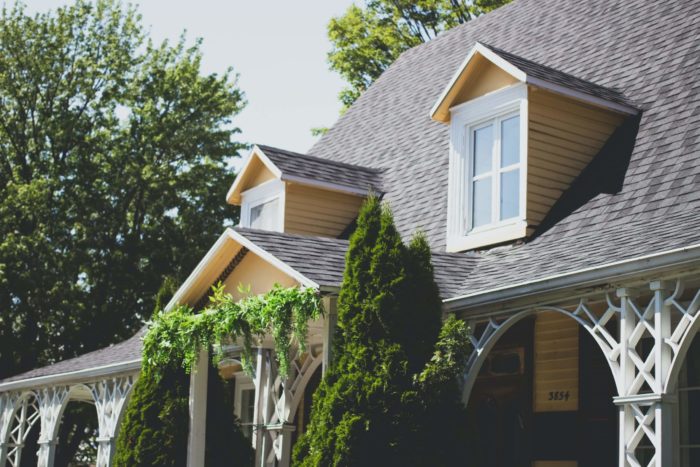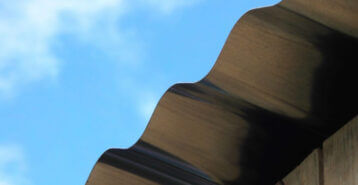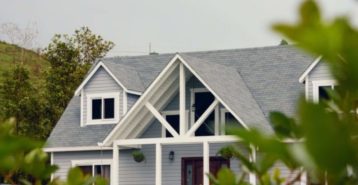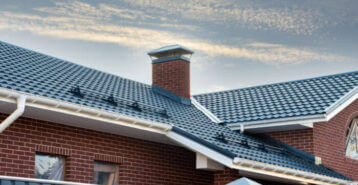Are you doing a roofing project?
Modernize can pair you with three to four pros in your area, so you can compare options and save time and money.
Everyone has that one room in their home that’s always too warm in the middle of the afternoon. Maybe it has a lot of windows, or perhaps it’s located in the path of the sun, but it never seems to get cool in there.
The same idea applies to your roof. If you have dark shingles, and especially if you live in an area with plenty of hot days, those shingles are a magnet for the sun. They absorb heat and drive up your cooling costs, particularly during peak demand times—like the late afternoon—when electricity providers are more vulnerable to blackouts and other problems. In fact, the Green Building Alliance says that about 90% of homes in the United States are “poorly designed” with “dark, non-reflective, heat-absorbing materials.” That means that your roof could be 90 degrees above the air temperature.
Thankfully, there is cool roof coating that can be added to the top of your roof to alleviate this problem. Studies performed on homes in high-heat areas such as Texas, Florida and California found that homeowners could reduce their electricity usage by 10 to 30% during peak load times just by applying a heat-reflective coating to their roof surfaces.
If you could use a break on your electric bills, it’s worth investigating cool roof coatings. We’ll discuss what it is, which homes stand to benefit most from these materials, the pros and cons, and which homes would be better off passing them by.
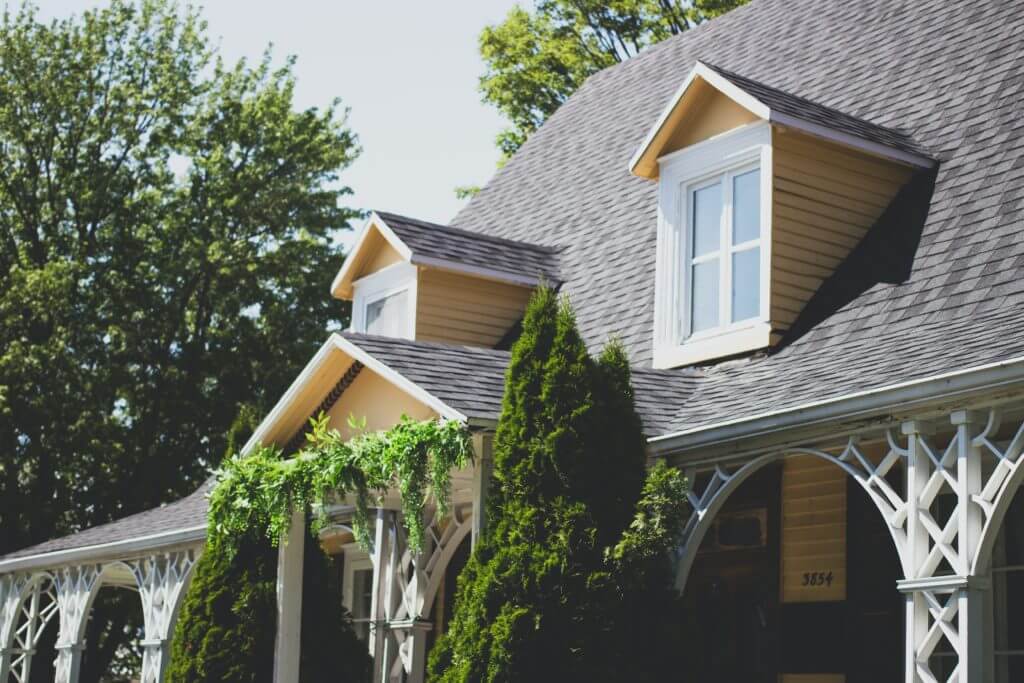
What is a Cool Roof Coating?
Cool roof coatings, as they’re known to building professionals, are applied to existing rooftops as a liquid “paint.” They’re lighter in color, meaning that they absorb less sunlight, which can help offset the cost to cool your home. With darker rooftops, the heat is absorbed into the building and the air conditioning unit has to work harder to keep your home at the lower temperature you desire.
Not only will it make your home more comfortable and lower your energy bill, it’s also good for the health of your roof. It acts as a layer of protection for your roof and can extend its longevity.
Which Kind of Cool Roof Coating Is Best?
The type of cool roof coating you use is going to depend on the kind of roof that you have, as well as a few other factors. There are a number of options available:
Elastomer Coatings
Also known as elastic cement, these come in the form of acrylic, silicone, or urethane. They contain polymers to keep the coatings less brittle and more water-resistant.
Cementitious Coatings
These are made up of concrete and ceramic particles dissolved in white acrylic paint. Since this is not water-resistant on its own, surfaces should first be prepped with a waterproof solution.
PUD Hybrid Coating
This uses both nano insulation and reflective pigments for heat protection. It is also water-based, making this coating both water-proof as well as flexible for crack resistance.
Modified Bitumen
This coating is made of layers of rubber or plastic, reinforced with fabrics. It has a smooth finish.
Spray Polyurethane
Two liquids are mixed together here to create a solid coating that is adhered to the roof. A protective coating must be used, as this is prone to UV damage and moisture.
Polymer
Another water-based coating, polymer coating works by using microspheres with non-conductive properties to reflect solar radiation away from the roof.
Fiber-filled Liquid
As the name indicates, fibers are used to reinforce a flexible, waterproof layer of white coating.
Single-ply Cool Roof Coat
Rather than a liquid that you spray or paint onto the roof, this is a prefabricated sheet that is rolled onto the roof and adhered with chemical adhesives.
All cool roof coatings improve the solar reflectance of your roof’s surfaces, in turn resulting in lower electric bills. Many also contain UV-resistant materials, which can potentially increase the lifespan of your roof. Double win!
Find the Right Contractor for Your Roofing Project
Whether you’re ready to begin your project now or need some expert advice, our network of contractors are here to help. With a few simple questions, we’ll find the best local professionals for you
Is Your Roof Right for Cool Roof Coatings?
Not every roof makes a good candidate for cool roof coating. If your home has asphalt shingles, a cool roof coating will actually void your roof’s warranty. Conversely, a metal roof is often already coated with a heat-reflective property.
If you live in an area with shorter summers and colder winters, cool roof coatings could actually increase your energy bills. That’s because the reflective surfaces still offset heat in winter, when solar heat gain could provide some relief from high heating bills.
The average humidity in your location should also factor into your decision. Cool roofs can draw excess moisture, since there’s not as much heat to evaporate water away. And in areas with high humidity, homeowners may face problems with algae and mold. Both of these can degrade your roof over time and lower its durability.
Coatings perform best on roofs with a low pitch or slope. These roofs typically absorb much more solar radiation, since they’re angled to receive the sun’s rays more directly. A very steeply pitched roof probably doesn’t exhibit the same problems with excess heat, so it won’t benefit as greatly.
Are Cool Roof Coatings Environmentally Friendly?
While a cool roof coating is an effective and easy solution to keeping the heat down in your home, there are some controversies surrounding it.
A study from Stanford University found that while cool roof coatings do reduce cooling loads for home interiors, they may not actually be the best for the environment. That’s because reflective surfaces can actually reduce area cloudiness. In turn, that leads to an increase in sunny conditions in densely populated areas—which speeds up global warming.
This is the reason why a cool roof coating is not recommended for homeowners who live in a very densely populated area. Painting your roof with these materials in urban spaces could raise the heat island index, which would be bad news for the environment.
Air Sealing: An Alternative to Cool Roof Coatings
As you can see, there are still questions to be answered before environmentalists can declare cool roof coatings a total win. If you are not sold on a cool roof coating but want to reduce the amount of heat you absorb through your roof, one easy way to get that done is to make sure you have a properly sealed and insulated attic.
Are your attic floor and ceiling properly sealed with insulation and weather-stripping? If not, then your air conditioning can leak from the interior of your home, bumping up your energy consumption significantly. In fact, according to the Department of Energy, attics offer some of the best opportunities to improve your home’s energy efficiency.
If you have unfinished floors, make sure to insulate them with insulation blankets and vapor barriers. Also, look for leaks and holes that need special attention, such as gaps around utility chases, soffits, and recessed lights. You can use expanding foam and silicone caulk to plug these gaps. Apply weather-stripping around the attic access to give you extra protection in your home’s interiors.
Better insulating your home is one of the number one things you can do to protect your energy expenses—even if you live in the south.
Can I Put a Cool Roof Coating on Myself?
It might seem easy to hop on the roof and paint on a cool roof coating. But homeowners will definitely want to discuss this project with a contractor. There are a number of coating options out there and each one is best served for different roofs. Contractors can also let you know about any financial incentives for adding the coating to your roof.
Want to discuss your roof project with a professional?
Find the Right Contractor for Your Roofing Project
Whether you’re ready to begin your project now or need some expert advice, our network of contractors are here to help. With a few simple questions, we’ll find the best local professionals for you
Reviews from Real Homeowners
Welcome to Homeowner Resources! We are the Modernize blog. Modernize pairs more than 3 million homeowners a year with pre-vetted contractors in their area. This blog started because we believe homeowners should know everything about their homes, from how their HVAC works to which front door colors they might love. On Homeowner Resources, you can find information on every part of your home, right down to how you can negotiate with contractors to get the best price. Here's more about the blog.
Need a contractor? Learn more about how Modernize finds the right pro for you.
